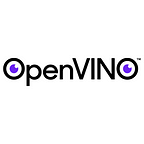Part Two: Customizing the AI-Powered Medical Assistant with OpenVINO™
Authors: Anisha Udayakumar and Zhuo Wu
With the basics of launching and running the AI medical assistant covered in Part One, it’s time to explore how to customize the assistant for different industries and integrate various models using the foundational kit.
1. Customizing the Assistant for Different Industries
Healthcare Applications:
- Enhance patient interactions and streamline consultations.
Potential Applications:
- Hospital Emergency Departments: Triage patients and gather preliminary information, saving precious time.
- Primary Care Clinics: Streamline routine check-ups.
- Telemedicine Platforms: Provide seamless, interactive remote consultations.
2. Using the Foundational Kit
The OpenVINO™ toolkit is essential for optimizing and deploying AI models efficiently. Here’s how you can leverage it:
Model Optimization:
- Convert and optimize models to improve performance and reduce resource usage.
Deployment Flexibility:
- Deploy optimized models across various Intel hardware and devices.
3. Integrating Various Models
Choosing the Right Model:
- Based on your application’s specific needs (e.g., ASR models, chat models).
Integration Steps:
- Follow similar steps to those described for setting up and optimizing models in the tutorial section.
4. Best Practices for Integration and Customization
Effective Model Integration:
- Choose appropriate data precision (e.g., int8, int4) based on your hardware capabilities.
Avoid Common Pitfalls:
- Ensure compatibility between models and deployment environments.
Additional Resources:
- Explore documentation and community forums for further support and information.
5. System Prompt Customization
The original initial system prompt built for the healthcare AI assistant is like this:
The rules that make the system prompt work well for the healthcare AI assistant could be summarized as follows:
- Highlight the role and objective of the custom AI assistant.
- Restrict the target of the answers that the AI assistant will provide so that it will provide suggestions it shouldn’t give.
- Restrict the information to be collected from the user and the questions to be avoided.
- Restrict the total number of questions to be asked to the user for better user experience.
Following these rules, one of Intel’s Innovators in Taiwan has built a “tour guide” AI assistant that works well with the right system prompt replaced and the new models supporting Taiwan’s local knowledge added. Here’s how it works:
Conclusion
With these tips and insights, you’re now equipped to customize your AI assistant for various applications and integrate additional models effectively. For a comprehensive guide on setting up and running the AI-powered medical assistant, including all the necessary steps and technical details, refer back to Part One. Explore, experiment, and let your creativity drive innovation. Happy coding!
Additional Resources
Part One: Crafting an AI-Powered Medical Assistant: Transforming Healthcare with OpenVINO™
Edge AI Reference Kit
OpenVINO™ Model Server GitHub repository
OpenVINO Documentation
Jupyter Notebooks
Installation and Setup
Product Page
About the Authors
Anisha Udayakumar is an AI Software Evangelist at Intel, specializing in the OpenVINO™ toolkit. At Intel, she enriches the developer community by showcasing the capabilities of OpenVINO, helping developers elevate their AI projects. With a background as an Innovation Consultant at a leading Indian IT firm, she has guided business leaders in leveraging emerging technologies for innovative solutions. Her expertise spans AI, Extended Reality, and 5G, with a particular passion for computer vision. Anisha has developed vision-based algorithmic solutions that have advanced sustainability goals for a global retail client. She is a lifelong learner and innovator, dedicated to exploring and sharing the transformative impact of technology. Connect with her on LinkedIn.
Zhuo Wu is an AI evangelist at Intel focusing on the OpenVINO™ toolkit. Her work ranges from deep learning technologies to 5G wireless communication technologies. She has made contributions to computer vision, machine learning, edge computing, IoT systems, and wireless communication physical layer algorithms. She has delivered end-to-end machine learning and deep learning-based solutions to business customers in different industries, such as automobile, banking, insurance, etc. She also has carried out extensive research in 4G-LTE and 5G wireless communication systems, and filed multiple patents when she was working as a research scientist at Bell Labs (China). She has led several research projects as the principal investigator when she was an associate professor at Shanghai University.
Notices & Disclaimers
Intel technologies may require enabled hardware, software, or service activation.
No product or component can be absolutely secure.
Your costs and results may vary.
© Intel Corporation. Intel, the Intel logo, and other Intel marks are trademarks of Intel Corporation or its subsidiaries. Other names and brands may be claimed as the property of others.
